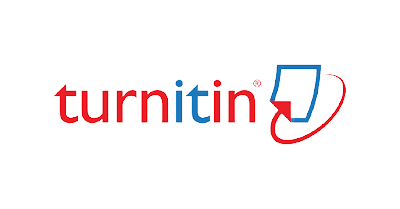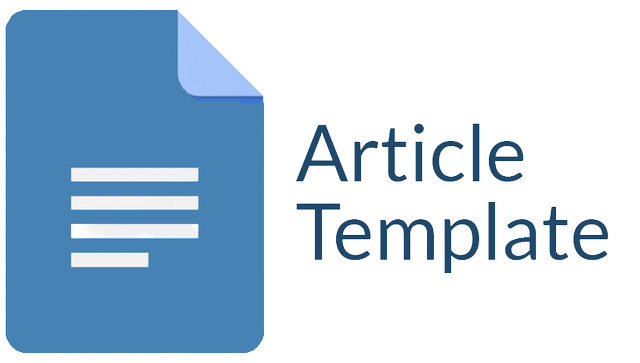PENERAPAN MODEL PEMBELAJARAN MAKE A MATCH DENGAN MEMANFAATKAN AUTOPLAY UNTUK MENINGKATKAN HASIL BELAJAR TEMA VIII PERISTIWA ALAM SD/MI
Abstract
Abstract: Based on the results of initial observations in class I SDN 2 Wonokoyo, learning outcomes on natural events are still low. This is caused by factors, one of which is the lack of using a learning model. To find a solution to solve the problem is to use the Make A Match by utilizing Autoplay. The research objectives are 1) To know the activities of teachers and students in using the Make A Match students responses to the application of the Make A Match for Natural Events 3) To find out how the learning outcomes are after using the Make a Match. Research is a classroom action that includes 4 stages of planning, implementation, observation and reflection. Research Subjects at SDN 2 Wonokoyo Class I, totaling 20 students. The results of the study obtained the value of student activities to operate the learning media Autoplay Cycle I 63, 33% Cycle II 78, 82. Cooperation 68. 79% Cycle I and Cycle II 86. 78%, Asking 65. 55% Cycle I while Cycle II 81. 17%. By using the Make A Match model with Autoplay, many people were interested and the learning outcomes in the first cycle were 12 with 60%, while the second cycle increased by 95% with 19 students completing. learning model Make A Match it can improve teacher abilities, improve learning abilities and outcomes
Downloads
References
Aliputri, D. H. (2018). Penerapan Model Pembelajaran Kooperatif Tipe Make A Match Berbantuan Kartu Bergambar Untuk Meningkatkan Hasil Belajar Siswa. Jurnal Bidang Pendidikan Dasar, 2(1A), 70–77. https://doi.org/10.21067/jbpd.v2i1a.2351
Anggraeni, A. A. A., Veryliana, P., & Fatkhu R, I. F. R. (2019). Pengaruh Model Pembelajaran Kooperatif Tipe Make A Match terhadap Motivasi dan Hasil Belajar Matematika. International Journal of Elementary Education, 3(2), 218. https://doi.org/10.23887/ijee.v3i2.18552
Asih, A. H. E. (2022). Pengembangan Bahan Ajar IPS Inspiratif Lingkungan Tempat Tinggalku untuk Meningkatkan Hasil Belajar. Jurnal Pendidikan Dan Kewirausahaan, 10(2), 381–391. https://doi.org/10.47668/pkwu.v10i2.367
Bahri, A., Hidayat, W., & Muntaha, A. Q. (2018). Penggunaan Media Berbasis Autoplay Media Studio 8 untuk Meningkatkan Aktivitas dan Hasil Belajar Siswa : Sebuah Inovasi Media Pembelajaran. Proceeding Biology Education Conference, 15(1), 394–402.
Cahyono, H. (2019). Faktor-Faktor Kesulitan Belajar Siswa Min Janti. Jurnal Dimensi Pendidikan Dan Pembelajaran, 7(1), 1. https://doi.org/10.24269/dpp.v7i1.1636
Fajarisman, Sanusi, T., & Widiatsih, A. (2021). The Efforts to Improve Student Learning Outcomes by Using Google Classroom during Covid 19 in the Subject of Pythagoras Theorem. AXIOMA Jurnal Program Studi Pendidikan Matematika Universitas Islam Jember, 6(2), 104 – 112. https://doi.org/https://doi.org/10.36835/axi.v6i2
Fajarisman, Widiatsih, A., & Kustiowati. (2021). Pengembangan Media Pembelajaran Berbasis Adobe Flash CS6 Pada Mata Pelajaran bahasa Mandarin Untuk SMP/MTs. Education Journal : Journal Education Research and Development, 5(1), 1–16. https://doi.org/https://doi.org/10.31537/ej.v5i1.415
Fauhah, H., & Brillian, R. (2021). Analisis model pembelajaran make a match terhadap hasil belajar siswa. Jurnal Pendidikan Administrasi Perkantoran, 9(2), 325. https://journal.unesa.ac.id/index.php/jpap/article/view/10080
Furqan, M., Efriyanti, L., Sesmiarni, Z., & Zakir, S. (2022). PERANCANGAN MULTIMEDIA PEMBELAJARAN BIMBINGAN TIK KELAS XII MENGGUNAKAN AUTOPLAY MEDIA STUDIO DI SMAN 1 PADANG SAGO. IRJE: JURNAL ILMU PENDIDIKAN, 2(3), 906–918.
Hariyanto, R. E., Widiatsih, A., & Atmaja, I. W. W. (2020). THE DEVELOPMENT OF AUTOPLAY MEDIA STUDIO 8 BASED LEARNING AND WONDERSHARE QUIZ CREATOR ON MUTUAL DEPENDENCE ON LIFE MATERIALS FOR CLASS VII JUNIOR HIGH SCHOOL. Journal of Education Technology and Inovation, 3(2), 83–99. https://doi.org/DOI: https://doi.org/10.31537/jeti.v2i2.582
Hasanah, N., & Ambarsari, I. F. (2022). Pengaruh Metode Kuis Menggunakan Aplikasi Quizizz dan Ice Braking Terhadap Motivasi Belajar pada Materi Sistem Persamaan Linear Tiga Variabel. Jurnal Pendidikan Dan Kewirausahaan, 10(3), 1133–1142.
Jayanti, I., Arifin, N., & Nur, D. R. (2020). Analisis Faktor Internal dan Eksternal Kesulitan Belajar Matematika di Sekolah Dasar. Jurnal Pendidikan, 1(1), 1–7.
Kemmis, S., McTaggart, R., & Nixon, R. (2014). Introducing critical participatory action research. The Action Research Planner, 1(2), 1–31.
Rahayu, R., Iskandar, S., & Abidin, Y. (2022). Inovasi Pembelajaran Abad 21 dan Penerapan Di Indonesia. Jurnal Basicedu, 6(2), 2099–2104. https://doi.org/10.31004/basicedu.v6i2.2082
Sudarto, B., Widiatsih, A., & Fajarisman. (2022). Pengembangan media pembelajaran interaktif berbasis Autoplay pada tema III peduli terhadap makhluk hidup untuk kelas IV SD/MI. ElenterIs: Jurnal Ilmiah Pendidikan Dasar ISlamam, 4(1), 1–13. https://doi.org/DOI: https://doi.org/10.33474/elementeris.v4i1.10815
Susilo, H., Chotimah, H., & Sari, Y. D. (2022). Penelitian Tindakan Kelas. Media Nusa Creative (MNC Publishing).
Wibowo, K. P., & Marzuki, M. (2015). Penerapan Model Make a Match Berbantuan Media Untuk Meningkatan Motivasi Dan Hasil Belajar IPS. Harmoni Sosial: Jurnal Pendidikan IPS, 2(2), 158–169. https://doi.org/10.21831/hsjpi.v2i2.7667
Copyright (c) 2023 Trisnaning Legiowati, Asri Widiatsih, Fajarisman Fajarisman

This work is licensed under a Creative Commons Attribution-ShareAlike 4.0 International License.
Jurnal allows anyone to compose, correct, and do derivative works, even for commercial purposes, as long as they credit for the original work. This license is the freest. It is recommended for maximum distribution and use of licensed material.
The submitted paper is assumed not to contain any proprietary materials that are not protected by patent rights or patent applications; The responsibility for technical content and protection of proprietary materials rests with the authors and their organizations and not the responsibility of journal or its editorial staff. The primary (first/appropriate) author is responsible for ensuring that the article has been viewed and approved by all other authors. The author's responsibility is to obtain all necessary copyright waivers to use any copyrighted material in the manuscript before submission.
Jurnal Pendidikan, Sains dan Teknologi allows the author(s) to hold the copyright without restrictions and allow the author(s) to retain publishing rights without restrictions. Jurnal Pendidikan, Sains dan Teknologi CC-BY-SA or an equivalent license as the optimal license for the publication, distribution, use, and reuse of scholarly work. Jurnal Pendidikan, Sains dan Teknologi allows the author(s) to hold the copyright without restrictions and allow the author(s) to retain publishing rights without restrictions. Jurnal Pendidikan, Sains dan Teknologi CC-BY-SA or an equivalent license as the optimal license for the publication, distribution, use, and reuse of scholarly work.
In developing strategy and setting priorities Jurnal Pendidikan, Sains dan Teknologi recognize that free access is better than priced access, libre access is better than free access, and libre under CC-BY-SA or the equivalent is better than libre under more restrictive open licenses. We should achieve what we can when we can. We should not delay achieving free in order to achieve libre, and we should not stop with free when we can achieve libre.
Jurnal Pendidikan, Sains dan Teknologi is licensed under a Creative Commons Attribution-ShareAlike 4.0 International License.
You are free to:
- Share a copy and redistribute the material in any medium or format
- Adapt a remix, transform, and build upon the material for any purpose, even commercially.
- The licensor cannot revoke these freedoms as long as you follow the license terms.






